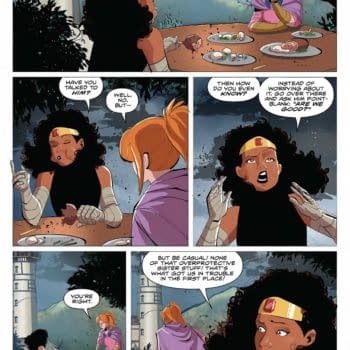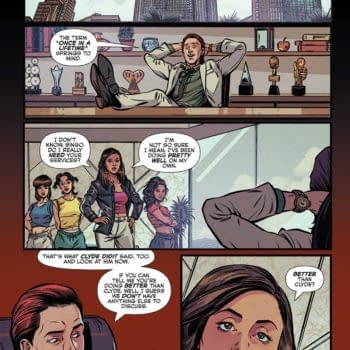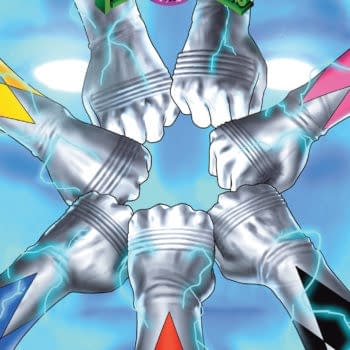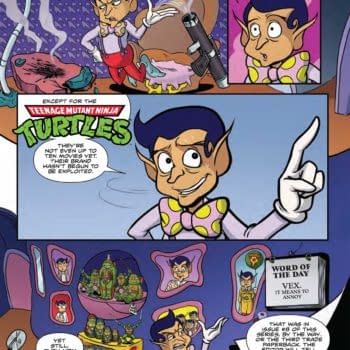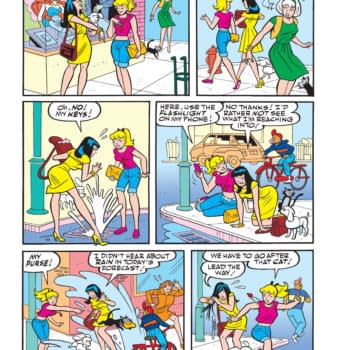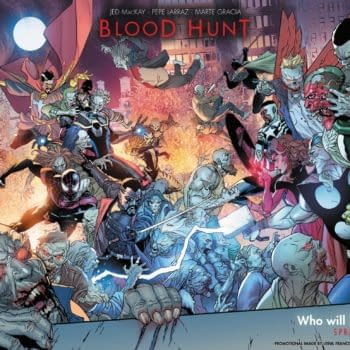Posted in: Comics, san diego comic con | Tagged: Alice Meichi Li, jay justice, Jazmine Joyner, Jewels Smith, Jules Rivera, Leen Isabel, Regine L Sawyer, Vanee Smith-Matsalia, WinC, women in comics
Women Of Color In Media: Visibility Achieved; Next Step, Representation
Christine Marquet writes for Bleeding Cool…
The Women of Color in Comics: Race, Gender, and the Comic Book Medium panel at San Diego Comic Con was organized by the Women in Comics Collective (WinC, pronounced "wink).
Their membership is made up of artists, writers, educators, filmmakers, show producers, art gallery directors, cosplayers, game developers, bloggers, and toy makers. Focusing on female and racial representation in comics, fandom, and the industry. The panelists included moderator Regine L. Sawyer (writer, publisher, WinC founder), Jewels Smith ([H]afrocentric writer and creator, activist), Vanee Smith-Matsalia (writer, educator), Jay Justice (cosplayer, activist), Alice Meichi Li (comic book artist, illustrator), Leen Isabel (cosplayer, artist, creator of Pole Dancing Adventures), Jazmine Joyner (comic book store owner), and Jules Rivera (comic book creator).
The unanimous bottom line for the topic of under-representation, for both the female gender and People of Color, was that while we have achieved visibility by being included in storylines, we are still left wanting for more behind the scenes, decision making and first person representation.
The summer's biggest blockbuster is a real win as a groudbreaking strong female lead dazzling audiences and raking in box office earnings. Wonder Woman's sucess let's the head's of studios know that people will come out to the theaters and open their wallets for an action film that has a WOMAN at the front of it, even a previously unknown one, even if they under market the film, which is impressive. This however does nothing for People of Color (POC). There is still a stigma that 1 POC in a series or feature covers the base of being inclusive, and 2 is still ok, but 3 black actors in a cast and you've gone over-board – now its a Black, Asian or Latino film/series.
This resistance to diversity really starts at the top level of the decision making hierarchy. If a Board room of executives for a studio are mapping out their next season, they see a room of 80% older white men, and 20% women, people of color and other all filling out the ends of the table, and they build content based on what they are surrouded by. This leads to the inclusion of a token black girl who is also the gay character on the series, or the staple of an asian chick either being the know-it-all doctor or over-sexualized party girl in the ensemble. But neither of these troupes leads the story line and typically, neither roles are written from a first person point of view experience.
These tendencies are in no way lost to the comic book industry, and indeed, the industry is one of the last yet to be forced to address it as the result of a huge lawsuit or #oscarssowhite catastrophy, according to moderator Regine L. Sawyer. Creators Jules Rivera and Jewels Smith both began writing stories with a strong female lead and/or cast of characters of color, when they realized they didn't see themselves on the covers of the content they so enjoyed.
The panelists agreed that the current state of diversity on screen is, in a way, a regression from the 70s 80s and 90s, when it was enough to just have a cast of characters that was different from the norm, without having to make that the topic of the piece, which is the case for current shows featuring casts of POC, such as Blackish and Off The Boat.
The representation of Women and People of Color in media is essential not just to represent the population with more relatability but also because of the reprucutions it can have in education. San Bernadito Educator and activist Vanee Smith-Matsalia explained this masterfully when she discussed her struggles with classroom ciriculums and her personal vendetta to diversify high-school ciriculums in her own classroom. She found that student's didn't respond or in turn learn, when the material was stories by white men about white men.
When she diverted from the ciriculllum and gave her students material they could relate to and see themselves in, people of color from under priveledged situations, the students' interest and grades became stronger. Add a graphic novel with a cover featuring a person who "looked like them" and they not only passed but excelled. "Student's do better when they see themselves in literature" according to Matsalia, and we can "close the achievement gap by adding diversity."
Matsalia's message may be tough to hear, but is tested and true: As a teacher, if you are only teaching what's been taught and whats been "working" you can't blame the system. "Destroy the Canon." Just because what we consider "the classics" is stories told by white men, doesn't mean that thats all that out there.





![[REVIEW] "Gang Beasts" is Zany Party Madness](https://mlpnk72yciwc.i.optimole.com/cqhiHLc.IIZS~2ef73/w:350/h:350/q:75/rt:fill/g:ce/https://bleedingcool.com/wp-content/uploads/2019/09/gang-beasts-7-350x350.jpg)
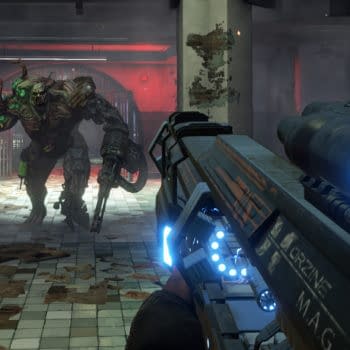
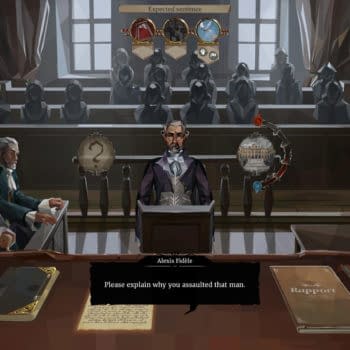


![[REVIEW] "Divinity: Original Sin II" Definitive Edition is Almost Perfect](https://mlpnk72yciwc.i.optimole.com/cqhiHLc.IIZS~2ef73/w:350/h:350/q:75/rt:fill/g:ce/https://bleedingcool.com/wp-content/uploads/2018/08/Divinity-Original-Sin-2-Definitive-Edition-art-350x350.jpg)
